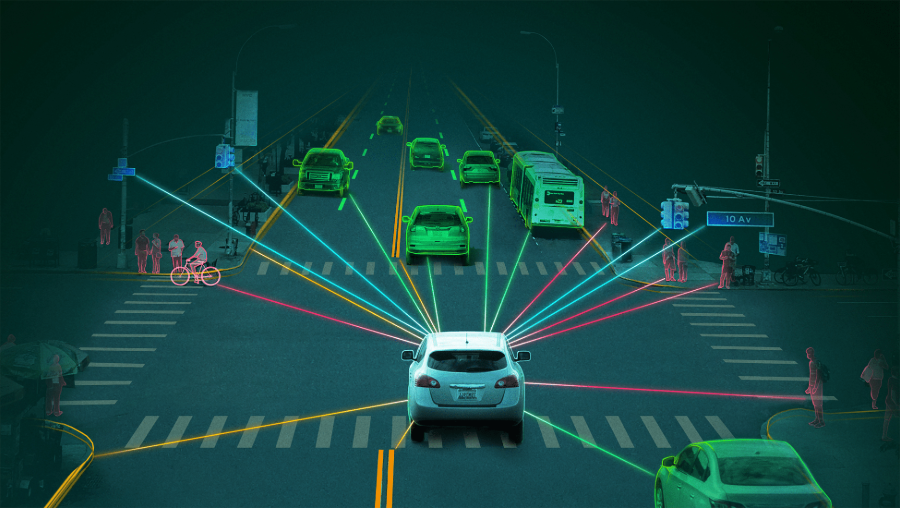Autonomous Vehicles
Autonomous vehicles, once a distant dream of science fiction, are now a tangible reality reshaping the landscape of transportation. These self-driving vehicles, equipped with advanced technologies such as artificial intelligence and sensor systems, hold the promise of revolutionizing the way we travel. This blog will delve into the evolution, current state, challenges, and prospects of autonomous vehicles.
Evolution of Autonomous Vehicles
The journey towards autonomous vehicles began with the development of driver assistance systems, such as cruise control, in the mid-20th century. Over the decades, advancements in computing power, machine learning, and sensor technologies accelerated the progress. The 21st century witnessed the emergence of fully autonomous prototypes, and major automotive and tech companies joined the race to bring self-driving cars to the market.
Current State of Autonomous Vehicles
As of today, autonomous vehicles are undergoing extensive testing in various real-world scenarios. Companies like Tesla, Waymo, and Uber have integrated semi-autonomous features into their vehicles, allowing for functions like adaptive cruise control and lane-keeping assistance. However, achieving full autonomy, where a vehicle can operate without human intervention in all conditions, remains a complex challenge.
The Society of Automotive Engineers (SAE) has defined levels of automation from Level 0 (no automation) to Level 5 (full automation). Most commercially available autonomous vehicles are currently categorized at Level 2 or Level 3, where some driving tasks can be automated, but human intervention is still required.
Challenges in Autonomous Vehicle Development
Despite significant progress, numerous challenges hinder the widespread adoption of autonomous vehicles. One major hurdle is the need for robust and reliable sensor technologies. Autonomous vehicles rely on a combination of cameras, lidar, radar, and other sensors to perceive their environment. Adverse weather conditions, complex traffic scenarios, and the detection of unforeseen obstacles pose substantial challenges that must be addressed for safe deployment.
Another critical concern is the ethical and legal framework surrounding autonomous vehicles. Questions about liability in the event of accidents, the ethical decision-making process of self-driving algorithms, and regulatory standards are complex issues that require careful consideration and international collaboration.
Cybersecurity is yet another pressing challenge. The integration of connectivity features in autonomous vehicles exposes them to potential cyber threats, raising questions about the safety and privacy of passengers.
Impact on Society
Autonomous vehicles have the potential to bring about transformative changes in various aspects of society. One of the most significant impacts is on road safety. Human errors contribute to the majority of traffic accidents, and autonomous vehicles, with their ability to react quickly and without distractions, could significantly reduce the number of accidents.
The rise of autonomous ride-sharing services could also lead to changes in the ownership and usage of vehicles. Instead of owning a car, individuals might opt for on-demand autonomous transportation, reducing the overall number of vehicles on the road and alleviating traffic congestion.
Furthermore, the accessibility of transportation for individuals with disabilities or the elderly could be improved through autonomous vehicles. Self-driving technology has the potential to provide newfound independence to those who face mobility challenges.
Future Prospects
Looking ahead, the future of autonomous vehicles is filled with both excitement and uncertainty. Continued technological advancements, increased collaboration between industry stakeholders, and ongoing research will likely lead to further improvements in autonomous driving capabilities.
The integration of 5G technology is expected to enhance vehicle-to-everything (V2X) communication, enabling autonomous vehicles to communicate with each other and with the surrounding infrastructure in real time. This could result in smoother traffic flow, enhanced safety, and more efficient transportation systems.
However, the road to full autonomy is paved with challenges, and overcoming them will require concerted efforts from the automotive industry, policymakers, and the public. Striking the right balance between innovation and safety, establishing clear regulatory frameworks, and addressing ethical considerations will be crucial in shaping the future of autonomous vehicles.
Autonomous vehicles represent a groundbreaking technological advancement with the potential to reshape the future of transportation. While significant progress has been made, challenges persist in achieving widespread adoption. As we navigate through this transformative era, a collaborative approach that involves technological innovation, regulatory development, and public acceptance will be essential. The evolution of autonomous vehicles is not merely a technological journey but a societal shift that requires careful navigation to unlock the full potential of this revolutionary technology.
Source

